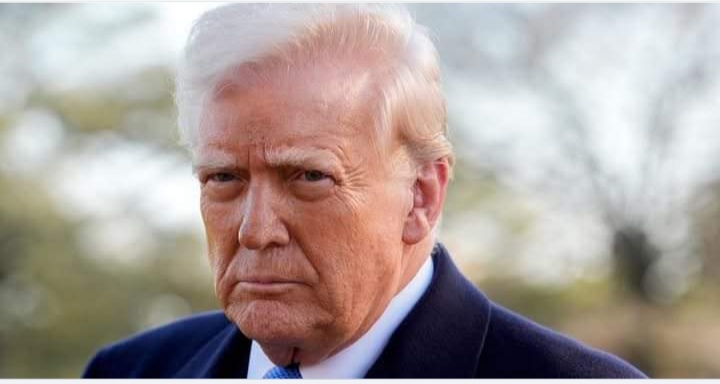NFL
Through executive orders, his bully pulpit and lieutenants in charge of the Justice Department and other Cabinet agencies, Trump’s actions are paralyzing institutions that stand as pillars of America’s independent civic society.

Through executive orders, his bully pulpit and lieutenants in charge of the Justice Department and other Cabinet agencies, Trump’s actions are paralyzing institutions that stand as pillars of America’s independent civic society.
**Title: Trump’s Executive Orders and Their Impact on America’s Independent Civic Institutions**
**Introduction**
During his tenure as President of the United States, Donald Trump made significant use of his executive orders, the “bully pulpit,” and his lieutenants within the Cabinet and the Justice Department. These mechanisms were often employed to advance his agenda, sometimes at the expense of the norms and institutions that uphold America’s democratic system. The consequences of his actions have led to a significant erosion of the foundations of independent civic institutions, which are crucial to ensuring the checks and balances that define the country’s democratic system.
**The Role of Executive Orders in Trump’s Presidency**
Executive orders are a powerful tool for any U.S. president, allowing them to make decisions unilaterally, often bypassing the legislative process. Under Trump, the use of executive orders became an essential method of implementing policy without needing Congressional approval. From halting funding to sanctuary cities to banning certain foreign nationals from entering the U.S., Trump’s executive orders were an embodiment of his willingness to stretch executive power to the limit.
While this approach may have resonated with his base, it also had serious implications for American institutions. Many of his orders, especially in the areas of immigration and environmental protections, were seen as undermining established legal norms. For instance, his travel bans were challenged in court, demonstrating how his policies were often controversial and prone to legal disputes, signaling a tension between the executive branch and the judiciary.
**The Bully Pulpit: A Tool for Undermining Institutions**
The “bully pulpit” is a term used to describe the president’s ability to influence the public and push a personal agenda by using the presidency as a platform. For Trump, the bully pulpit was a means of reaching his supporters directly, often bypassing traditional media channels. His rhetoric was blunt and combative, designed to appeal to populist sentiments but frequently used to delegitimize institutions that posed obstacles to his agenda.
Trump frequently attacked the media, calling it the “enemy of the people” and accusing it of spreading fake news. This undermined public trust in independent journalism, which is a cornerstone of a functioning democracy. His attacks extended to other pillars of the U.S. democratic structure, including the judiciary, which he claimed was politically biased. By using his platform to discredit any institution that disagreed with him, Trump sowed division and mistrust, further eroding the checks and balances necessary for holding those in power accountable.
**Justice Department and Cabinet Agencies: Loyalty Over Independence**
One of the most striking features of Trump’s presidency was his influence over the Justice Department and other Cabinet agencies. Rather than leaving these institutions to operate independently, as tradition and law demand, Trump sought to place individuals loyal to him in key positions. His appointments to the Department of Justice, including Attorney General William Barr, raised alarms about political interference in the legal system. Barr, in particular, was accused of prioritizing Trump’s political interests over the impartiality expected of the nation’s top law enforcement official.
In a notable example, Barr oversaw the decision to clear the protestors from Lafayette Square for a photo op, a move that many critics viewed as an abuse of power. His handling of investigations into Trump’s political rivals, including the probe into Joe Biden’s son, also sparked concerns about the weaponization of the Justice Department for partisan purposes. These actions not only weakened the credibility of the Justice Department but also set a dangerous precedent for the politicization of the nation’s top legal institutions.
Similarly, Trump’s influence over other Cabinet agencies, from the Environmental Protection Agency (EPA) to the Department of Education, reflected his desire to reshape these institutions according to his vision, even if it meant sidelining expert advice and undermining their core missions. By appointing individuals with little regard for the functions of these agencies, Trump weakened their independence, causing long-term damage to the institutions that were supposed to safeguard American values and interests.
**The Erosion of American Civic Institutions**
The paralyzing effect of Trump’s executive orders, the bully pulpit, and his appointments to Cabinet and Justice Department positions has been felt across many areas of American governance. Independent civic institutions—those which ensure that the government remains accountable, transparent, and just—were undermined in favor of personal loyalty and political expediency. The checks and balances that protect the American system of democracy were strained as Trump consistently placed his personal interests above the well-being of the institutions that are meant to serve the public.
Trump’s actions and rhetoric revealed a deep mistrust of traditional institutions, as he sought to dismantle systems he deemed obstacles to his political power. This approach created divisions in American society, as the erosion of trust in institutions became widespread. The loss of confidence in these institutions has left lasting scars on the nation, making it more difficult to restore the faith in the independent checks and balances that define American democracy.
**Conclusion**
In retrospect, the Trump presidency marked a period of profound tension between the executive branch and the independent civic institutions that have been integral to the functioning of American democracy. By relying on executive orders, the bully pulpit, and placing loyalists in key positions of power, Trump paralyzed many of the institutions that act as pillars of America’s democratic system. The consequences of these actions may be felt for years to come, as the nation grapples with the long-term effects on the public’s trust in its government and the independence of its key institutions. It is now up to future leadership to rebuild these foundations and restore the integrity of the American democratic system.






